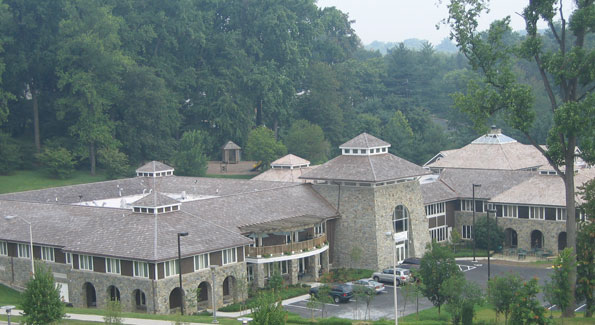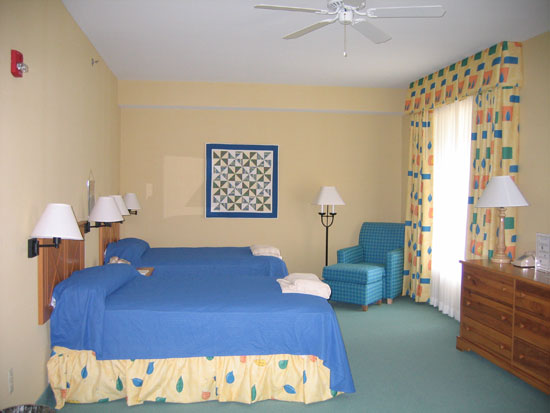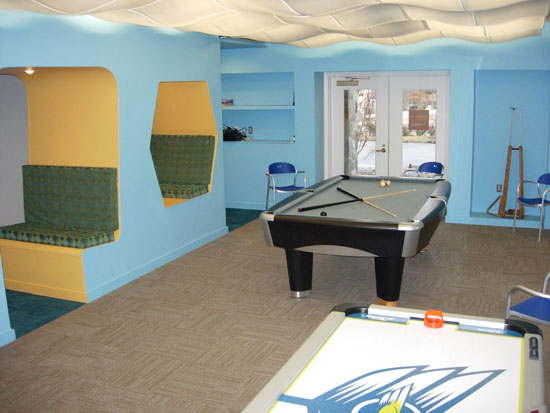A home away from home for pediatric patients and their families.
By Helen Yoshida

The Children's Inn provides housing for children battling various illnesses and their families. (Courtesy photo)
Since June of 1990 the Children’s Inn at the National Institutes of Health (NIH) in Bethesda, Md. has provided accommodations for sick children who receive treatment at NIH and their families. The Inn, open 24 hours a day, seven days a week, 365 days a year, provides these youths and their families with the communal support they need during an often difficult time at no charge. Spacious rooms, three large communal kitchens and dining rooms, a living room and a patio give kids the opportunity to socialize, play games and participate in regular outings, helping to provide a respite from doctors and hospital procedures. Washington Life spoke with Chief Executive Director Kathy Russell about the family dynamics at the Inn, activities for residents, and the impact of the Inn on these children and their families.
How does the communal atmosphere of the Inn affect the children receiving medical treatment and their families?
Children need the comfort and security of their families especially in this difficult and chaotic time. Resources such as church, friends and family are needed in dealing with any crisis and we try to replicate that in this multicultural environment. These are particularly brave and thoughtful children that are looking for solutions for their own disease. They are benefiting themselves and at the same time contributing to a basis of knowledge that can be used when treating diseases in future generations of children.
How do families bond with one another while residing at the Inn?
Often it’s moms in the kitchen cooking a meal for their family or cooking that special thing when their child is sick or dads talking about their children’s progress over the pool table. It’s the places where we go naturally in our own homes and it’s those moments when families can offer support to each other. There is formal support too; it could be chaplains coming in to work on reflection exercises with families for a child’s illness or a trip for pizza. It’s an opportunity to develop friendships that lessen loneliness and anxiety and offers hope and support in a very difficult time.
What are some of the most popular monthly and annual programs among the residents?
Tuesday night bingo is very popular. Educational field trips are also terrific for national and international families. It could be a visit to the Smithsonian museums or it could be as simple as a Japanese family explaining the spring Cherry Blossom Festival during Washington, D.C.’s Cherry Blossom Festival while picnicking with other residents on the National Mall. Again, there are both informal and formal programs and this multicultural environment creates the opportunity to have this type of cultural exchange as the common bond for families is a sick child. When you have sick children you turn to others for support.
Do parents return to the Children’s Inn?
Yes they do; there was a parent that returned recently. This mom lost her child here 12 years ago. She returned last week with a family friend, who is a saxophonist, and the saxophonist performed for the children at the Inn. It was the mother’s first time back and by returning she was giving back for the support that she received from the Inn and from the NIH.
Do children keep in touch with one another after departing from the Inn?
Yes, they do keep in touch. The Internet and social marketing makes it easier to do so. In fact we recently found out that two kids, both with significant visual deficits that became friends while in the same protocol, are now dating. He plays the saxophone, she sings and they come and perform for the children that are currently staying here.
We’ve also had a few weddings here, mostly when they knew the end was near. Life is about going on here, trying to be normal, trying to experience those things that children want to experience, and families wanting to support one another through these difficult times.
What about the Inn do children love the most?
For some it’s the play room and the opportunity to be in there with other kids while parents are cooking. For children ranging in age from 7 to 12 we have this great game room with Wii, Nintendo, air hockey and a pool table. For some it’s the sports court. For some it’s the art therapy program and doing some kind of art project together with an arts therapist. Our resident therapy dog Vi is also popular. She loves to meet kids at the door and wag her tail. It really depends on what your interests are and what you want to be doing. There is a reflection space and a business center for parents. There’s a learning center that has a master’s prepared educator who works with their home school to keep up with their studies. The Bistro has a 70-inch television with surround sound and is a great place to watch sports. During events such as the Olympics and soccer, families donned their colors and put on their jerseys in support of their favorite team. You really see diversity and community come together.
As Chief Executive Director what do you believe is the Inn’s greatest achievement?
While we provide temporary housing for residents the difference for us is that we are partners in the pursuit for pediatric problems. For example, there is a vast and diverse autism spectrum and kids with severe autism make it incredibly difficult to stay in a hotel setting. We provide accommodations so that they can participate in studies and receive medical treatment. In essence we support the NIH mission to biomedical research and the development of new pediatric therapies and in doing so we are supporting a family in crisis today and supporting a family that’s participating in research that has the potential to affect future generations of children with these diseases.
What do you think is the Inn’s greatest challenge?
This economy is difficult. We’re in an area where there are hundreds of charities that are competing for the dollar. I would also say that there scientist and researchers here with finite resources and limited funding. The NIH can only bring in a certain number of families and they can only support those that are brought in. We can only move as fast as the resources are available, but since we’ve opened our doors in June 1990 11,000 kids have come to stay with us. That’s 11,000 kids who illuminate the promise of hope and discovery for their benefit and that has influenced medicine today.
How can D.C. and Maryland locals become involved at the Inn?
Please take a look at our website. There are opportunities for everyone to become involved. Church groups can have food drives or send Thoughtful Treasures. Those Treasures can be an encouraging note, a candy or stuffed animal that are left in the children’s mailbox. It could be as easy as buying an extra bag of rice while making that trip to Costco. It’s good to know that the local church can host a dinner here so they don’t have to worry about getting dinner for the evening.



